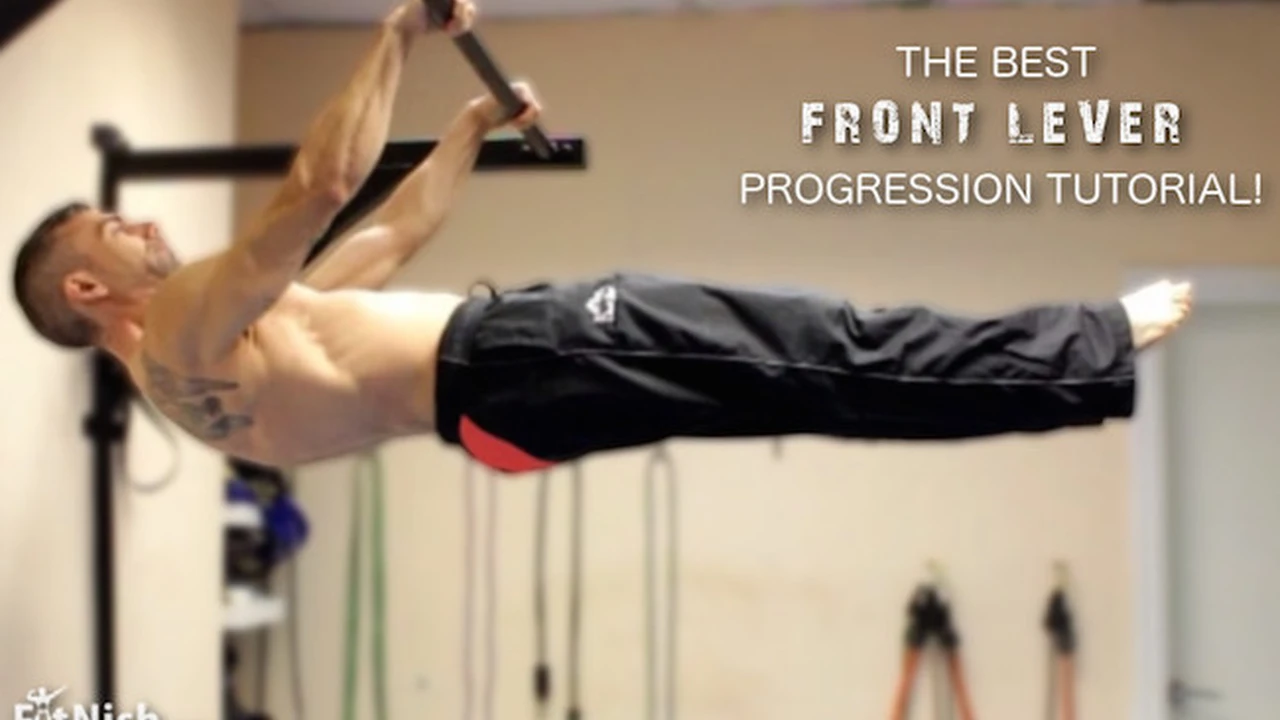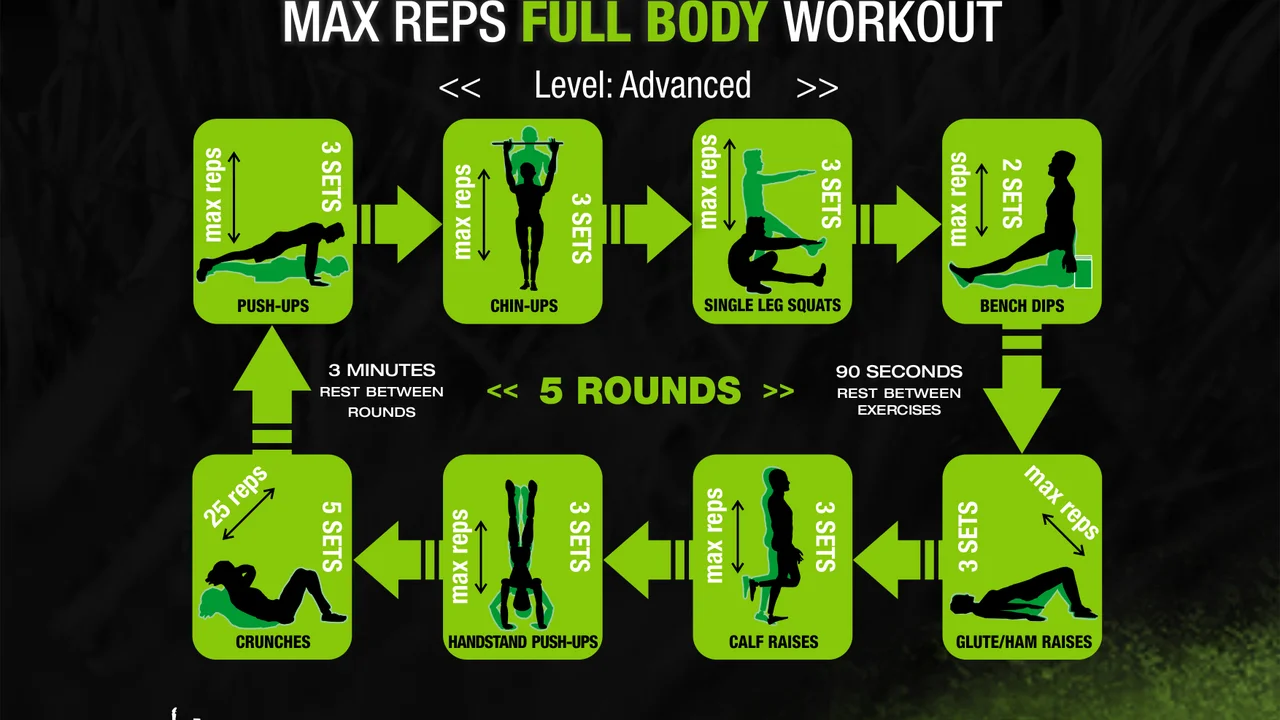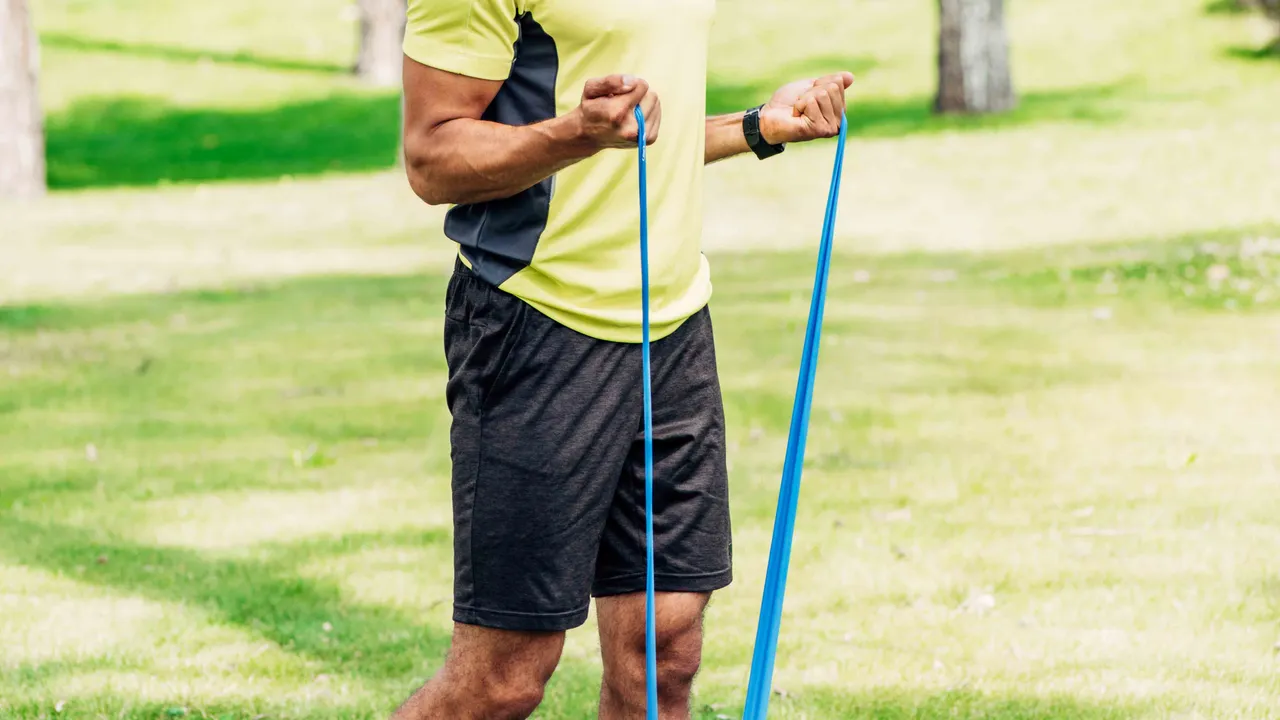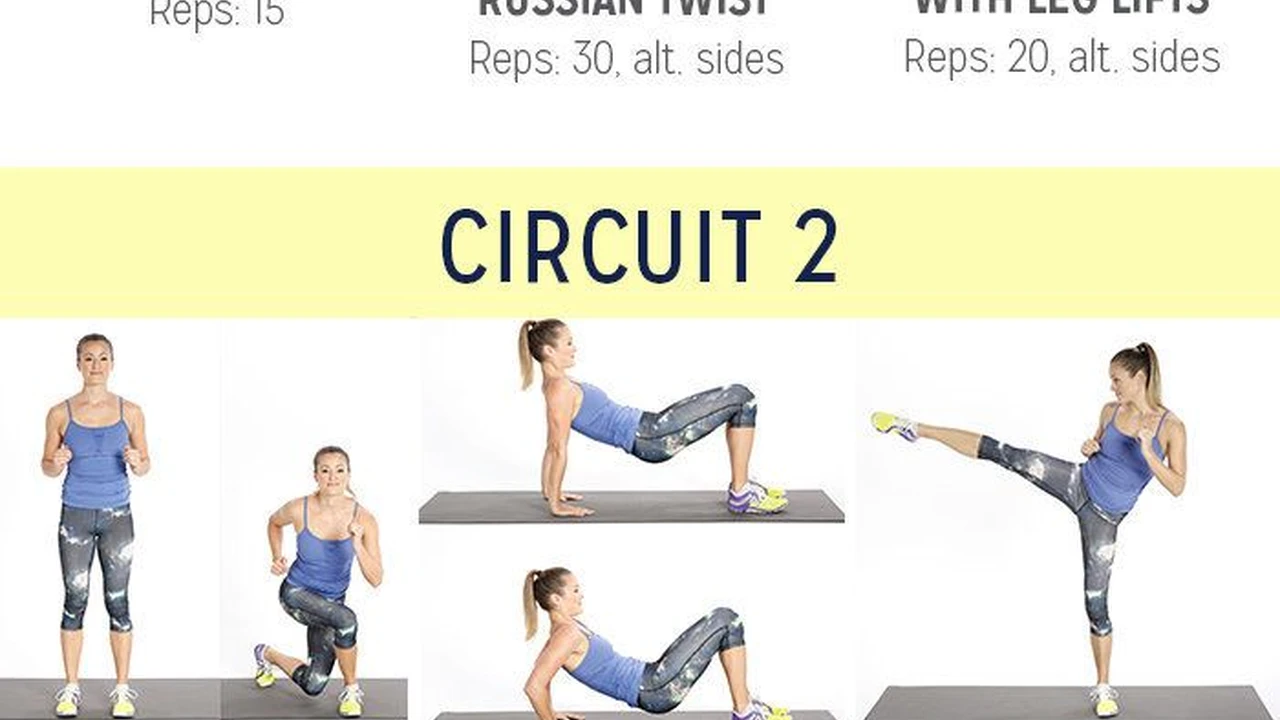Front Lever Progression_ Building Back Strength

Mastering the front lever requires dedication progressive training and a deep understanding of body mechanics This article explores advanced front lever progressions techniques and equipment recommendations to help you unlock this impressive feat of strength
Understanding Front Lever Prerequisites Strength and Mobility Essentials
Before diving into advanced front lever progressions its crucial to establish a solid foundation This means having adequate strength in your lats back core and shoulders Furthermore sufficient mobility in your shoulders and wrists is essential to prevent injuries and maximize your performance
Strength Prerequisites
- Pull-ups Aim for at least 10-12 clean pull-ups with full range of motion This demonstrates a baseline level of back strength necessary for the front lever
- Rows Perform various row variations such as barbell rows dumbbell rows and inverted rows These exercises build horizontal pulling strength which complements the vertical pulling strength of pull-ups
- Plank Hold a plank for at least 60 seconds This indicates good core stability which is crucial for maintaining a straight body line in the front lever
- Hollow Body Hold Practice the hollow body hold for 30-60 seconds This exercise strengthens the anterior core and helps you maintain proper body positioning
Mobility Prerequisites
- Shoulder Mobility Perform shoulder dislocations with a light resistance band shoulder circles and arm swings to improve shoulder mobility
- Wrist Mobility Practice wrist extensions flexions and rotations to enhance wrist flexibility and prevent injuries
- Thoracic Spine Mobility Improve thoracic spine mobility with cat-cow stretches thoracic rotations and foam rolling
Advanced Front Lever Progressions From Tuck to Full Front Lever
Once you have established a solid foundation its time to progress through the various front lever variations Each progression builds upon the previous one gradually increasing the difficulty and strength demands
Tuck Front Lever
The tuck front lever is the easiest variation and serves as a starting point for most individuals In this position your knees are tucked towards your chest and your body is in a compact ball shape
Technique
- Hang from a bar with an overhand grip slightly wider than shoulder-width
- Engage your lats and retract your scapula
- Tuck your knees towards your chest bringing your body into a ball shape
- Maintain a straight back and avoid rounding your spine
- Hold the position for as long as possible gradually increasing the duration
Advanced Tuck Front Lever
Once you can hold the tuck front lever for 30-60 seconds you can progress to the advanced tuck front lever In this variation you extend your legs slightly further away from your body increasing the lever arm and difficulty
Technique
- Follow the same steps as the tuck front lever but extend your legs slightly further away from your body
- Maintain a straight back and avoid arching your spine
- Focus on engaging your core and lats to maintain the position
- Hold the position for as long as possible gradually increasing the duration
Straddle Front Lever
The straddle front lever is the next progression after the advanced tuck front lever In this position your legs are spread apart forming a V-shape This increases the lever arm and requires more strength and control
Technique
- Hang from a bar with an overhand grip slightly wider than shoulder-width
- Engage your lats and retract your scapula
- Tuck your knees towards your chest and then extend your legs out to the sides forming a V-shape
- Maintain a straight back and avoid arching your spine
- Focus on engaging your core and lats to maintain the position
- Hold the position for as long as possible gradually increasing the duration
One-Leg Front Lever
The one-leg front lever is a challenging progression that requires significant strength and balance In this position one leg is extended while the other leg is tucked towards your chest
Technique
- Hang from a bar with an overhand grip slightly wider than shoulder-width
- Engage your lats and retract your scapula
- Tuck one knee towards your chest while extending the other leg straight out in front of you
- Maintain a straight back and avoid arching your spine
- Focus on engaging your core and lats to maintain the position
- Hold the position for as long as possible gradually increasing the duration
- Repeat on the other side
Full Front Lever
The full front lever is the ultimate goal and requires immense strength and control In this position your body is perfectly straight parallel to the ground
Technique
- Hang from a bar with an overhand grip slightly wider than shoulder-width
- Engage your lats and retract your scapula
- Extend your legs straight out in front of you maintaining a straight line from head to toe
- Maintain a straight back and avoid arching your spine
- Focus on engaging your core lats and glutes to maintain the position
- Hold the position for as long as possible gradually increasing the duration
Front Lever Training Techniques Optimizing Your Workouts
To effectively train for the front lever its important to incorporate various training techniques into your workouts These techniques will help you build strength improve control and prevent injuries
Isometric Holds
Isometric holds involve holding a static position for a specific duration This is a highly effective technique for building strength and endurance in the front lever progressions
Technique
- Choose a front lever progression that you can hold for a reasonable amount of time
- Assume the correct position and hold it for as long as possible maintaining proper form
- Rest for a sufficient amount of time between sets
- Repeat for multiple sets
Negative Repetitions
Negative repetitions involve controlling the eccentric or lowering phase of an exercise This is a great way to build strength and muscle mass
Technique
- Choose a front lever progression that you can control during the lowering phase
- Jump into the correct position and slowly lower yourself down maintaining proper form
- Use assistance if needed to return to the starting position
- Repeat for multiple repetitions
Assisted Front Lever
Assisted front lever involves using assistance such as resistance bands or a spotter to help you perform the exercise This allows you to train the full range of motion even if you dont have the strength to do it unassisted
Technique
- Attach a resistance band to the bar and loop it around your feet or hips
- Assume the correct position and perform the front lever with the assistance of the band
- Alternatively have a spotter assist you by holding your legs or hips
- Repeat for multiple repetitions
Scapular Retraction Exercises
Scapular retraction is the act of squeezing your shoulder blades together This is crucial for maintaining proper form and engaging your lats during the front lever
Exercises
- Band Pull-Aparts Hold a resistance band with both hands and pull it apart squeezing your shoulder blades together
- Face Pulls Use a cable machine or resistance band to pull a rope or band towards your face squeezing your shoulder blades together
- Rows Perform various row variations focusing on squeezing your shoulder blades together at the end of each repetition
Essential Equipment for Front Lever Training Optimizing Your Setup
Having the right equipment can significantly enhance your front lever training experience Here are some essential pieces of equipment that can help you progress faster and more safely
Pull-Up Bar
A sturdy pull-up bar is the foundation of front lever training Choose a bar that is stable and can support your weight safely Consider a wall-mounted pull-up bar or a free-standing pull-up station
Product Recommendation:
Titan Fitness Wall Mounted Pull-Up Bar
Description This heavy-duty wall-mounted pull-up bar is constructed from 11-gauge steel and can support up to 500 lbs Its easy to install and provides a stable platform for front lever training
Use Case Ideal for home gyms and fitness studios The Titan Fitness Wall Mounted Pull-Up Bar is perfect for performing pull-ups front lever progressions and other bodyweight exercises
Pricing Approximately $7999
Resistance Bands
Resistance bands are versatile tools that can be used for assisted front lever training stretching and warm-up exercises Choose a variety of resistance levels to accommodate your strength level
Product Recommendation:
Serious Steel Fitness Resistance Bands
Description These high-quality resistance bands are made from durable latex and come in a variety of resistance levels They are perfect for assisted front lever training stretching and rehabilitation exercises
Use Case Use the resistance bands to assist you with front lever progressions or to provide resistance during warm-up exercises They can also be used for stretching and mobility work
Pricing A set of resistance bands ranges from $20 to $50 depending on the number of bands and resistance levels included
Gymnastics Rings
Gymnastics rings are a great alternative to a pull-up bar They offer a greater range of motion and challenge your stability and control They are also more joint-friendly than a fixed bar
Product Recommendation:
Elite Sportz Equipment Gymnastics Rings
Description These high-quality gymnastics rings are made from durable ABS plastic and come with adjustable straps They are perfect for performing ring dips ring pull-ups and front lever progressions
Use Case Use the gymnastics rings to perform a variety of bodyweight exercises including front lever progressions The rings challenge your stability and control making the exercises more effective
Pricing Approximately $4999
Chalk
Chalk helps to improve your grip on the bar preventing slippage and allowing you to focus on the exercise Choose a chalk that is appropriate for your skin type and the humidity level in your training environment
Product Recommendation:
Spider Chalk
Description Spider Chalk is a high-performance chalk that provides a strong and long-lasting grip It is made from a blend of magnesium carbonate and other ingredients that help to absorb moisture and improve friction
Use Case Apply Spider Chalk to your hands before performing front lever progressions to improve your grip and prevent slippage
Pricing Approximately $15 per bag
Comparing Equipment Options Choosing the Right Gear for Your Needs
When choosing equipment for front lever training its important to consider your individual needs and preferences Here is a comparison of the different equipment options
Pull-Up Bar vs Gymnastics Rings
Pull-Up Bar
- Pros Stable and easy to use
- Cons Limited range of motion can be hard on joints
Gymnastics Rings
- Pros Greater range of motion more joint-friendly challenges stability and control
- Cons Requires more coordination and skill can be more challenging for beginners
Resistance Bands vs Assisted Pull-Up Machine
Resistance Bands
- Pros Affordable versatile portable
- Cons Resistance can be inconsistent
Assisted Pull-Up Machine
- Pros Consistent resistance easy to adjust
- Cons Expensive bulky not portable
Liquid Chalk vs Chalk Block
Liquid Chalk
- Pros Less messy longer-lasting
- Cons Can be more expensive can dry out hands
Chalk Block
- Pros Affordable easy to apply
- Cons Messier needs to be reapplied frequently
Nutrition and Recovery Fueling Your Front Lever Journey
Nutrition and recovery play a crucial role in your front lever training progress Proper nutrition provides the fuel your body needs to build strength and muscle while adequate recovery allows your muscles to repair and rebuild
Nutrition
- Protein Consume adequate protein to support muscle growth and repair Aim for 16-22 grams of protein per kilogram of body weight per day
- Carbohydrates Consume complex carbohydrates to provide energy for your workouts Choose whole grains fruits and vegetables
- Fats Consume healthy fats to support hormone production and overall health Choose sources like avocados nuts seeds and olive oil
- Hydration Drink plenty of water to stay hydrated and support muscle function
Recovery
- Sleep Aim for 7-9 hours of sleep per night to allow your muscles to repair and rebuild
- Active Recovery Incorporate active recovery activities such as light cardio stretching and foam rolling to improve blood flow and reduce muscle soreness
- Rest Days Take rest days to allow your body to fully recover Avoid training the same muscle groups on consecutive days
- Stress Management Manage stress levels through techniques such as meditation yoga or spending time in nature
Injury Prevention Strategies Protecting Your Body During Training
Preventing injuries is crucial for long-term progress in front lever training Proper warm-up technique and progressive overload are essential for minimizing the risk of injury
Warm-Up
A proper warm-up prepares your muscles and joints for the demands of training It should include dynamic stretching joint mobility exercises and light cardio
Sample Warm-Up Routine
- Light Cardio 5-10 minutes of light cardio such as jogging or jumping jacks
- Dynamic Stretching Arm circles leg swings torso twists
- Joint Mobility Shoulder circles wrist rotations ankle rotations
- Specific Warm-Up Perform light sets of pull-ups rows and scapular retractions
Technique
Proper technique is essential for preventing injuries during front lever training Focus on maintaining proper form and engaging the correct muscles
Key Technique Points
- Engage Your Lats Actively engage your lats to pull your body towards the bar
- Retract Your Scapula Squeeze your shoulder blades together to stabilize your shoulders
- Maintain a Straight Body Line Keep your body in a straight line from head to toe
- Engage Your Core Activate your core muscles to stabilize your spine
Progressive Overload
Progressive overload involves gradually increasing the intensity or volume of your training This allows your body to adapt and become stronger without increasing the risk of injury
Strategies for Progressive Overload
- Increase the Duration of Holds Gradually increase the duration of your isometric holds
- Increase the Number of Repetitions Gradually increase the number of repetitions you perform
- Increase the Resistance Gradually increase the resistance you use such as by using a lighter resistance band or removing assistance
- Progress to More Difficult Variations Gradually progress to more difficult front lever variations
Troubleshooting Common Front Lever Problems Addressing Weaknesses
Many individuals encounter challenges when training for the front lever Identifying and addressing these weaknesses is crucial for progress
Weak Lats
Weak lats are a common obstacle in front lever training The lats are the primary muscles responsible for pulling your body towards the bar
Solutions
- Focus on Pull-Ups and Rows Incorporate various pull-up and row variations into your training
- Lat Pulldowns Use a lat pulldown machine to isolate and strengthen your lats
- Scapular Retraction Exercises Perform exercises that focus on scapular retraction to improve lat activation
Weak Core
A weak core can lead to instability and difficulty maintaining a straight body line in the front lever
Solutions
- Plank Variations Perform plank variations such as side planks and plank rotations to strengthen your core
- Hollow Body Holds Practice the hollow body hold to strengthen your anterior core
- Leg Raises Perform leg raises to strengthen your lower abs
Poor Shoulder Mobility
Limited shoulder mobility can restrict your range of motion and increase the risk of injury
Solutions
- Shoulder Dislocations Perform shoulder dislocations with a light resistance band
- Arm Circles Perform arm circles to improve shoulder mobility
- Thoracic Spine Mobility Exercises Improve thoracic spine mobility with cat-cow stretches and thoracic rotations
Weak Grip Strength
Weak grip strength can limit your ability to hold onto the bar for extended periods of time
Solutions
- Farmers Walks Carry heavy dumbbells or kettlebells for a distance to improve grip strength
- Dead Hangs Hang from a bar for as long as possible to improve grip endurance
- Grip Strengtheners Use grip strengtheners such as hand grippers or stress balls
Maintaining Motivation and Consistency Staying on Track
Staying motivated and consistent is essential for achieving your front lever goals Here are some tips for maintaining your motivation and consistency
Set Realistic Goals
Set realistic goals that are challenging but achievable This will help you stay motivated and track your progress
Track Your Progress
Track your progress by recording your workouts and monitoring your performance This will help you see how far youve come and stay motivated
Find a Training Partner
Find a training partner who shares your goals and can provide support and accountability
Join a Community
Join an online or in-person community of front lever enthusiasts This will provide you with a sense of belonging and support
Reward Yourself
Reward yourself for achieving milestones This will help you stay motivated and celebrate your successes
Be Patient
Be patient and persistent Front lever training takes time and effort Dont get discouraged if you dont see results immediately Just keep working hard and you will eventually achieve your goals
:max_bytes(150000):strip_icc()/277019-baked-pork-chops-with-cream-of-mushroom-soup-DDMFS-beauty-4x3-BG-7505-5762b731cf30447d9cbbbbbf387beafa.jpg)






